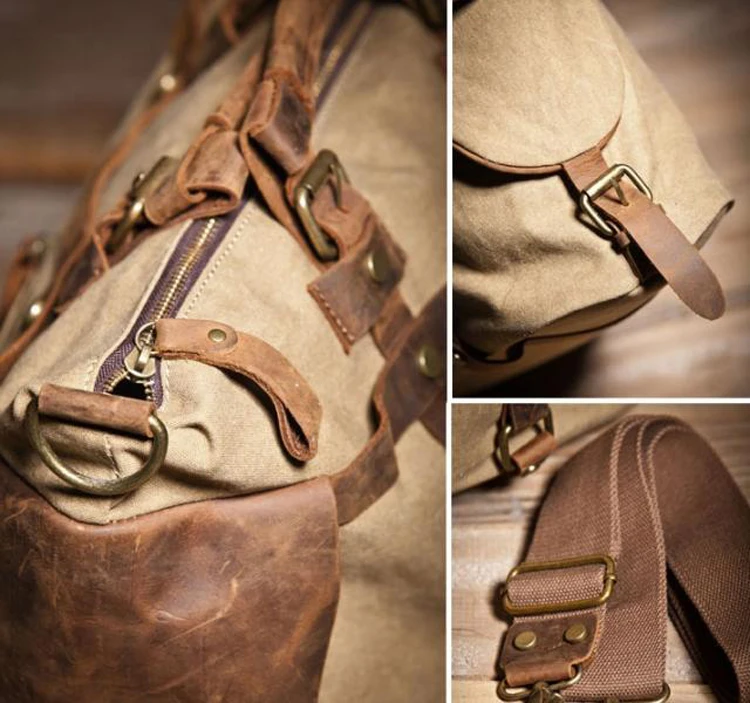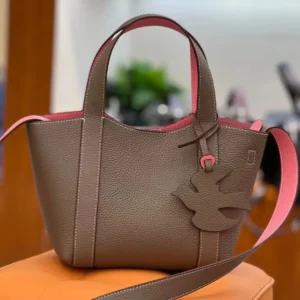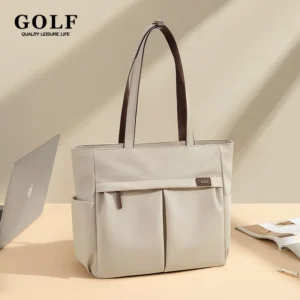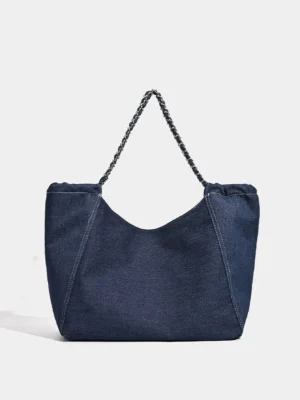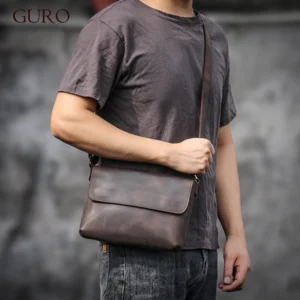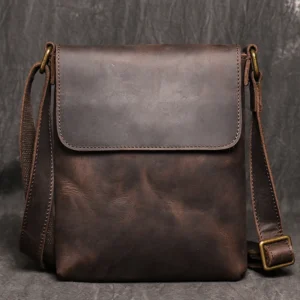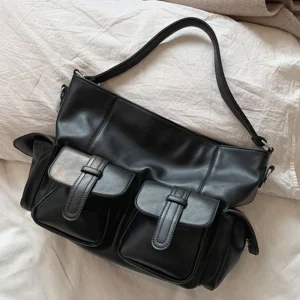Understanding Messenger Bags as Modern Day Essentials
Messenger bags have evolved significantly from their humble beginnings as tools for bicycle couriers and postal workers to become versatile everyday companions for professionals, students, and commuters alike. Defined by their single-strap, cross-body design and signature flap closure, these bags strike a perfect balance between accessibility and security that few other bag styles can match.
What makes everyday-use messenger bags stand out is their unique combination of easy access, stylish appearance, and practical functionality. Unlike backpacks that require removal to access contents or briefcases that occupy your hands, messenger bags allow for quick retrieval of items while keeping your hands free and maintaining a professional appearance.
The enduring appeal of leather messenger bags stems from several key characteristics:
- Accessibility: Contents can be reached without removing the bag from your body
- Adaptable style: Appropriate for both professional and casual environments
- Strategic organization: Designed for quick access to frequently used items
- Comfortable cross-body carry: Distributes weight more effectively than single-shoulder bags
As we explore the functionality of messenger bags throughout this guide, you’ll discover why they’ve become indispensable tools for modern life—blending practical design with versatile style in ways that other bag formats simply cannot match.
Core Capacity: What Can You Realistically Carry?
When considering a messenger bag for daily use, understanding its true capacity helps set realistic expectations about what you can comfortably carry. Most standard messenger bags fall into distinct size categories that accommodate different needs:
- Compact (8-10 liters): Perfect for essentials only—tablet, small notebook, wallet, phone, keys
- Standard (11-15 liters): Accommodates a 13-14” laptop, notebooks, water bottle, and personal items
- Expanded (16-20+ liters): Fits larger 15-17” laptops, textbooks, lunch container, and extra clothing
The rectangular shape of messenger bags creates an efficient packing space for documents, laptops, and books, but this design has practical limitations. Unlike backpacks that expand outward, messenger bags perform best when items are kept relatively flat and distributed evenly to prevent uncomfortable bulging against your body.
A typical professional’s daily load might include:
– 13” laptop and charger
– Notebook and planner
– Water bottle
– Small tech accessories (mouse, cables, etc.)
– Wallet, phone, keys
– Light jacket or sweater
This collection of items fits comfortably in a standard messenger bag without causing strain or awkward weight distribution. The key is organizing items with the heaviest (usually a laptop) positioned against your body and lighter items toward the outside.
Weight considerations are crucial for comfortable carrying. While messenger bags excel in accessibility, they place weight on a single shoulder, making them less comfortable than backpacks when carrying loads over 15 pounds for extended periods. The ideal weight for all-day comfort typically ranges from 8-12 pounds, depending on the bag’s design and strap quality.
For those regularly carrying essentials in messenger bags, consider how you’ll organize items based on frequency of access. Professional laptop messengers typically feature padded sleeves that keep your computer secure while allowing room for other necessities.
Organization: Keeping Your Daily Essentials Accessible
Effective organization is where messenger bags truly shine for everyday use. The typical layout offers a thoughtful arrangement of compartments designed to keep items secure yet accessible:
- Main compartment: The primary space, often containing a padded laptop sleeve and enough room for books or folders
- Front pockets: Smaller compartments under the flap for frequently accessed items
- Quick-access pockets: External pockets that don’t require opening the main flap
- Back slip pocket: Flat pocket against your body for slim items needing security (wallet, passport)
- Pen slots and card holders: Small organizational elements for tiny essentials
The front flap design that defines messenger bags creates a natural security system: items in the main compartment remain protected under this flap, while still allowing quick access with a simple flip. This represents a significant advantage over backpacks, which typically require complete removal to access main contents.
One organizational challenge unique to messenger bags is the tendency for items to shift toward the bottom when worn. Strategic use of internal dividers helps maintain order, especially for those who need document-friendly bag interiors to keep papers neat and unwrinkled.
Different professions benefit from customized organization approaches:
- Business professionals: Separate sections for documents, technology, and meeting essentials
- Creative workers: Accessible storage for tools, sketchbooks, and digital devices
- Students: Organized spaces for textbooks, notebooks, and study materials
- Commuters: Quick-access pockets for transit cards and secure spaces for valuables
The key to messenger bag organization is establishing a consistent system—always keeping specific items in the same pocket creates muscle memory for quick retrieval without looking. This makes messenger bags particularly effective for busy environments where efficiency matters.
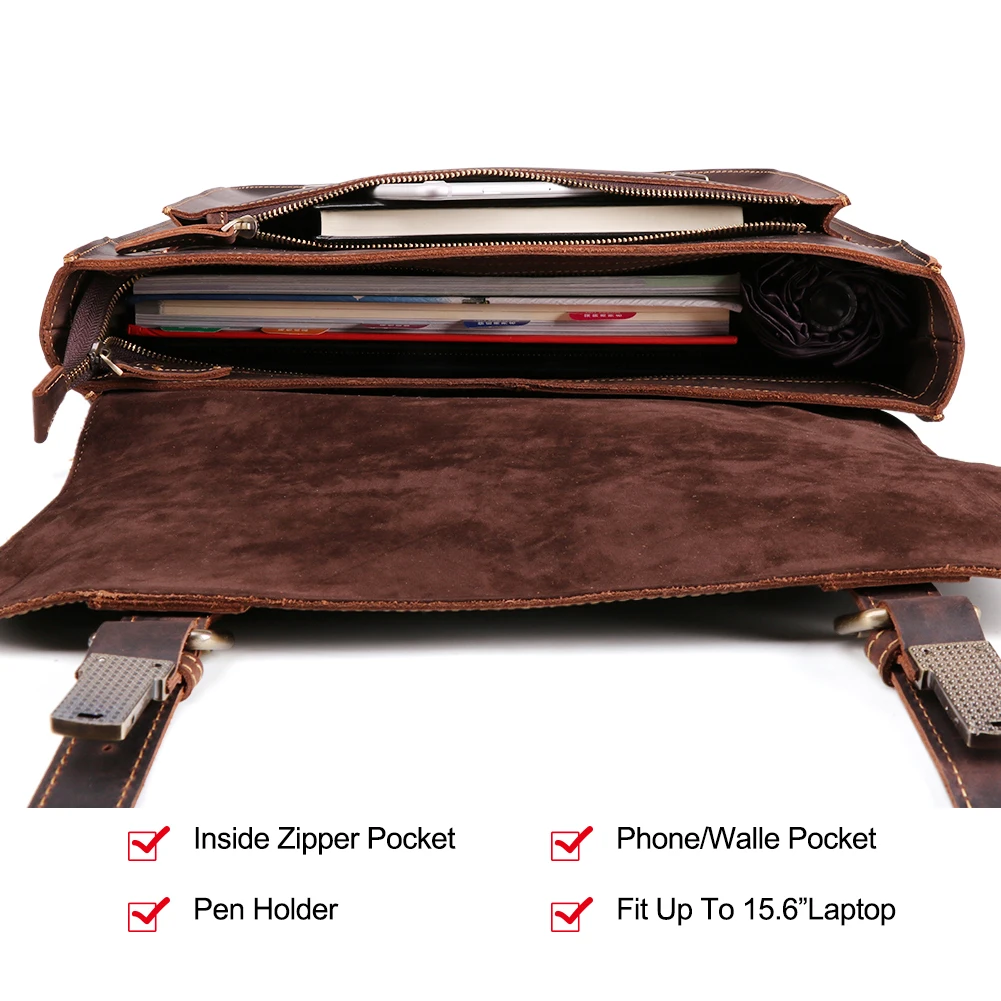
Accessibility: One-Handed Operation and Quick Retrieval
Perhaps the greatest everyday advantage of messenger bags is their unmatched accessibility. Their design allows you to swing the bag forward while still wearing it, creating instant access to your belongings without removing the bag or finding a surface to set it on.
This side-access feature proves invaluable in numerous everyday situations:
– Standing on crowded public transportation
– Quick retrieval of items while walking
– Accessing essentials during brief stops without removing the bag
– Getting to your wallet or phone while keeping the bag secure on your body
Different closure types significantly impact accessibility. Traditional buckles offer classic style but slower access, while magnetic snaps and hook-and-loop fasteners provide nearly instant entry with one hand. Many modern designs incorporate these quick-access closures behind decorative buckles, combining traditional aesthetics with practical functionality.
The versatility of messenger bags extends to how they can be positioned for access. When worn cross-body, a simple slide from back to front brings all contents within view and reach. This rotation capability makes messenger bags particularly useful in urban environments where setting your bag down isn’t always possible or advisable.
Security and accessibility exist in careful balance with messenger bags. While quick-access is valuable, it shouldn’t compromise protection of valuables. Quality designs address this through:
- Hidden back pockets against your body for high-value items
- Interior zippered pockets for secure storage within easy-access compartments
- Main compartment security features beneath quick-access areas
- Strategic pocket placement that keeps valuables naturally protected by your arm position when worn
The ability to retrieve items without removing your bag—often with just one hand—represents a significant functional advantage over backpacks and briefcases in everyday situations, especially during commuting or travel.
Comfort and Ergonomics: All-Day Wearability
For messenger bags to truly function as everyday companions, comfort during extended wear becomes essential. The single-strap design presents unique ergonomic considerations that quality bags address through thoughtful features:
- Strap width and padding: Wider straps (at least 2 inches) with adequate padding distribute weight more evenly across your shoulder and chest
- Contoured design: Straps that curve to match shoulder shape prevent digging and slipping
- Adjustability range: Sufficient length adjustment accommodates different body types and wearing positions
- Stabilizing straps: Secondary straps that secure around the waist or chest prevent the bag from shifting during active movement
- Back panel padding: Cushioning where the bag rests against your back enhances comfort, especially when carrying harder items
Proper positioning dramatically affects comfort. For optimal weight distribution, the bag should sit high on your back when walking (preventing it from bouncing against your hip) but can be lowered when standing still or accessing contents. The strap should cross your chest diagonally, with the bag resting against the lower back or hip on the opposite side from the shoulder carrying the strap.
Material choices significantly impact comfort beyond just the strap. Breathable back panels prevent overheating, while bags with some structural rigidity maintain their shape rather than conforming awkwardly to your body. These details become particularly important when commuting with leather messenger bags, as the combination of movement and body heat can create discomfort with poorly designed bags.
While messenger bags cannot match the ergonomic balance of backpacks for heavy loads, quality design features make them comfortable enough for all-day wear with reasonable weights. The key is finding the right balance between capacity needs and comfortable carrying limits.
Materials and Durability for Daily Use
The materials used in messenger bag construction directly influence both functionality and longevity for everyday use. Each common material offers distinct advantages worth considering:
| Material | Durability | Weather Resistance | Weight | Appearance |
|---|---|---|---|---|
| Canvas | High | Moderate (often waxed for improvement) | Moderate | Casual to business-casual |
| Ballistic Nylon | Very High | High | Light | Technical to business-casual |
| Leather | High (improves with age) | Moderate (needs treatment) | Heavy | Business-casual to formal |
| Waxed Canvas | High | High | Moderate | Casual to vintage |
| Polyester | Moderate | Moderate to High | Very Light | Casual |
Beyond the primary material, several construction elements determine how well a messenger bag withstands daily wear:
- Strap attachment points: Reinforced with additional material and box-stitching to prevent tearing
- Bottom panel: Often double-layered or made with abrasion-resistant material where the bag contacts surfaces
- Hardware quality: Metal fixtures instead of plastic for buckles, D-rings and adjustment points
- Seam construction: Bound edges and double stitching at stress points prevent fraying and tears
- Interior lining: Waterproof or water-resistant linings protect contents when exterior materials get wet
Understanding how canvas compares to leather bags helps in selecting the right material for your needs. Canvas offers lighter weight and casual versatility, while leather provides professional appearance and develops character over time. Many users appreciate canvas-leather hybrid messenger bags that combine the durability of canvas with leather trim for a balanced approach.
Weather protection varies significantly between materials but can be enhanced through design features like storm flaps over zippers, sealed seams, and water-resistant treatments. For those in rainy climates, choosing materials with natural or added water resistance becomes particularly important for protecting electronic devices and documents.
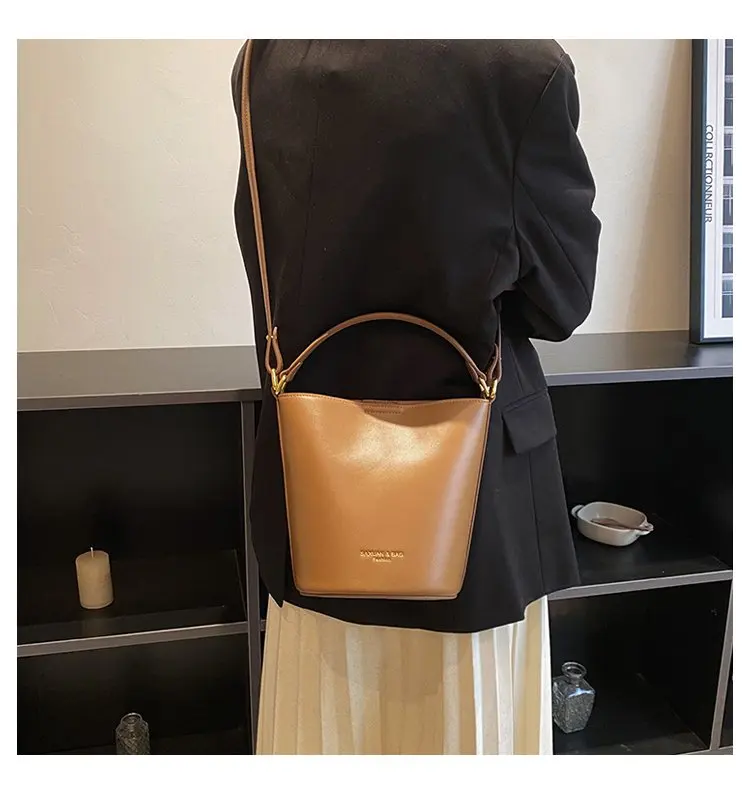
Style Versatility: From Office to Weekend
The style versatility of messenger bags makes them particularly valuable for everyday use, easily transitioning between professional and casual environments. This adaptability stems from their balanced design—more structured than casual backpacks but less rigid than formal briefcases.
In professional settings, messenger bags offer several advantages:
– Clean, organized appearance that complements business attire
– Professional presence without the formality of a traditional briefcase
– Easy transport of technology while maintaining a polished look
– Hands-free functionality during commutes and between meetings
For casual use, the same bag adapts through:
– Relaxed carrying position lower on the hip
– Pairing with casual clothing without looking out of place
– Functional design that supports active lifestyles
– Accommodating varied contents from work tools to weekend essentials
Design elements that enhance versatility include minimal branding, classic color options (black, brown, navy, olive), and simple hardware that doesn’t skew too casual or formal. Removable elements like logo patches or decorative straps allow further customization based on the setting.
The gender-neutral appeal of messenger bags adds to their versatility, with designs that work well across various style preferences through thoughtful sizing and strap adjustments. Knowing how to wear a leather messenger bag properly enhances both comfort and style—keeping the bag close to your body with the strap adjusted appropriately for your height creates a more polished appearance than letting it hang loosely.
By selecting a messenger bag with versatile styling cues, you gain an accessory that functions across multiple environments without looking out of place, making it a truly practical everyday companion.
Practical Daily Scenarios: How Messenger Bags Perform
To truly appreciate messenger bag functionality, consider how they perform in common everyday scenarios:
Morning Commute (Public Transit)
The messenger bag shines during crowded commutes by staying secure against your body while allowing quick access to transit cards, phones, or books without removal. The cross-body position keeps your bag protected against your side while leaving hands free for holding rails or handling coffee. The flat profile takes up minimal space in crowded vehicles compared to protruding backpacks.
Cycling to Work
For bicycle commuters, messenger bags offer the perfect balance of security and accessibility. The strap’s cross-body design prevents the bag from falling during rides, while stabilizing straps on higher-quality bags prevent unwanted shifting. Quick-access to items at stop lights happens without removing the bag, and the flat back design prevents excessive sweating compared to backpacks.
Office Workday
During office hours, messenger bags transition seamlessly to professional environments. They sit neatly beside or under desks without the casual appearance of backpacks. In meetings, essential items remain accessible without digging through a deep bag, and documents stay flat and unwrinkled in dedicated compartments. The clean lines and structured shape maintain professional appearance throughout the day.
Coffee Shop Work Sessions
The messenger bag’s design excels in temporary workspaces. The flat bottom allows the bag to stand upright beside tables rather than taking up valuable floor space. Contents remain organized and accessible without emptying the entire bag, and quick-access pockets keep essentials within reach without opening the main compartment and displaying all contents.
Unexpected Weather
Quality messenger bags offer good protection during sudden weather changes. Water-resistant materials and protective flaps shield contents from rain, while the cross-body position keeps the bag close rather than exposing it fully to elements. Many designs include hidden rain covers for additional protection.
Best messenger bags for daily use incorporate features that address these common scenarios, while professional leather messengers offer the refined appearance needed for business environments without sacrificing practical functionality.
Brown Leather Work Tote, Large Leather Work Tote
$194.38 Select options This product has multiple variants. The options may be chosen on the product pageLeather Laptop Work Tote, Tan Leather Work Tote, Women's Leather Work Tote, Zippered Leather Work Tote
Price range: $223.62 through $237.97 Select options This product has multiple variants. The options may be chosen on the product pageCanvas & Leather Messenger Bag, Leather Commuter Tote
$80.41 Select options This product has multiple variants. The options may be chosen on the product pageCrazy Horse Leather Satchel, Men's Leather Satchel, Men's Professional Leather Messenger, Vintage Style Messenger Bag
$132.70 Select options This product has multiple variants. The options may be chosen on the product pageBrown Leather Messenger Bag, Men's Leather Satchel, Men's Professional Leather Messenger
$118.87 Select options This product has multiple variants. The options may be chosen on the product pageBlack Leather Messenger Bag, Black Leather Work Tote, Faux Leather Work Tote
$101.88 Select options This product has multiple variants. The options may be chosen on the product page
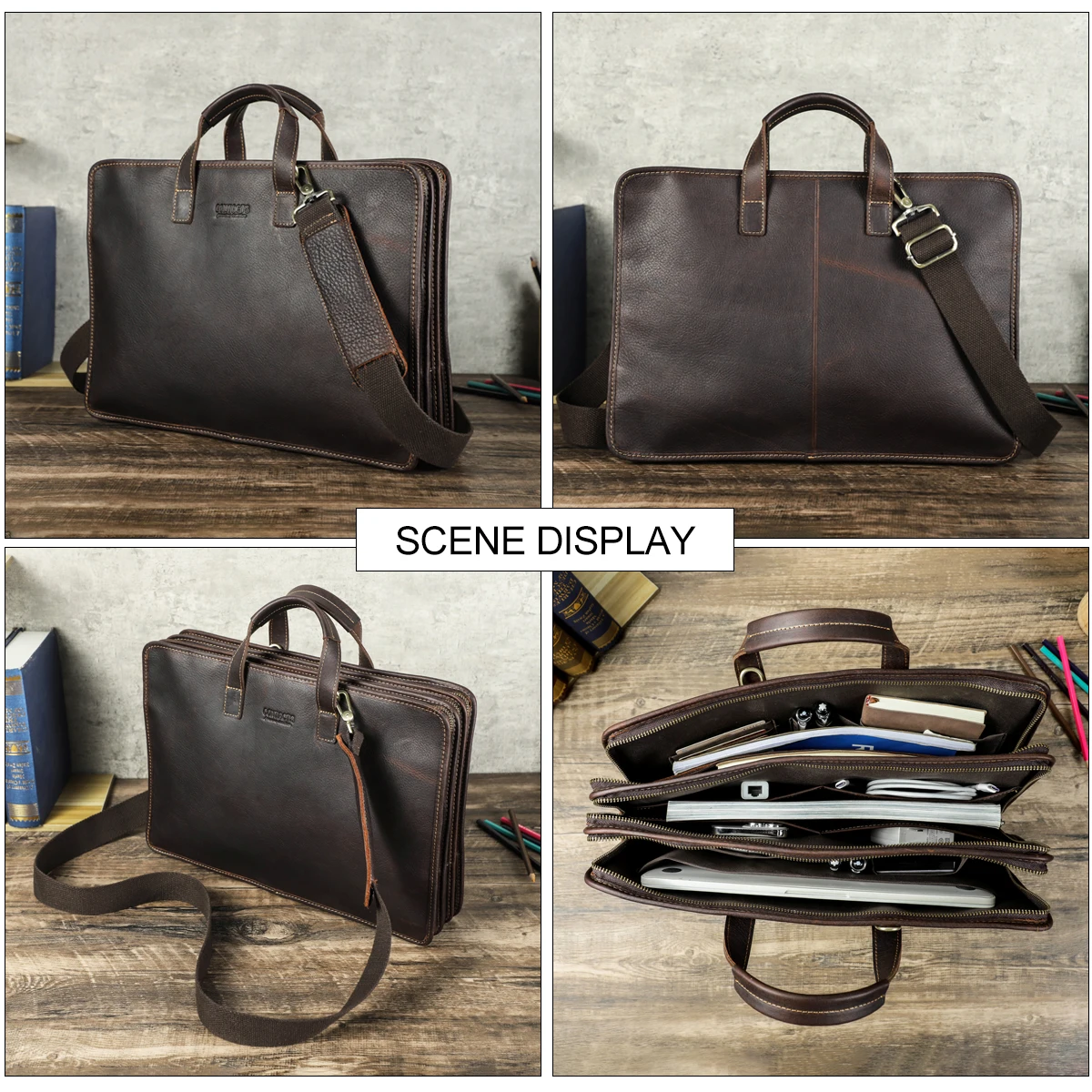
Comparison: Messenger Bags vs. Other Everyday Carry Options
Understanding how messenger bags compare to alternatives helps identify when they represent the optimal choice for everyday carry:
| Feature | Messenger Bag | Backpack | Briefcase | Tote Bag |
|---|---|---|---|---|
| Access while wearing | Excellent (swing to front) | Poor (must remove) | N/A (hand carried) | Moderate (open top) |
| Weight distribution | Good (cross-body) | Excellent (dual shoulder) | Poor (one hand/arm) | Poor (one shoulder) |
| Professional appearance | Very Good | Moderate | Excellent | Good |
| Capacity | Moderate | High | Moderate | Moderate |
| Organization | Excellent | Good | Excellent | Poor |
| Hands-free carry | Yes | Yes | No | Partial |
| Weather protection | Good (covered flap) | Good | Moderate | Poor (often open top) |
Messenger bags excel in situations requiring:
– Frequent access to contents while moving
– Professional appearance with greater functionality than briefcases
– Moderate loads with good organization
– Transitions between different environments throughout the day
– Quick placement and removal (compared to backpacks)
However, other options may prove superior when:
– Carrying heavy loads for extended periods (backpacks distribute weight better)
– Maximum professional formality is required (briefcases)
– Carrying bulky or irregularly shaped items (totes offer flexible space)
– Engaging in highly active pursuits like running or hiking (specialized backpacks)
When choosing the perfect daily messenger bag, consider your typical load, required organization, professional environment, and how frequently you need to access contents. For those seeking alternatives, leather work totes offer greater flexibility for bulky items while maintaining professional appearance.
Optimizing Your Messenger Bag Experience (Supplemental Content)
Does a messenger bag replace a laptop bag completely?
Yes, most quality messenger bags include padded laptop compartments that provide protection equivalent to dedicated laptop bags, with the added benefit of space for additional essentials and better organization.
Can messenger bags be worn in formal business settings?
Leather messenger bags with clean designs and minimal hardware are appropriate for most formal business environments, offering a modern alternative to briefcases without sacrificing professionalism.
What makes a messenger bag “weatherproof” versus “water-resistant”?
Water-resistant bags have treated materials that repel light moisture but may eventually allow water penetration during extended exposure. Weatherproof bags feature sealed seams, waterproof materials, and protective flaps that prevent water infiltration even during heavy rain.
Essential accessories that enhance messenger bag functionality:
– Padded strap attachments for improved comfort
– Water-resistant rain covers for additional protection
– Cable organizers to prevent tangling of electronics
– Modular internal dividers for customized organization
Vertical messenger bags (taller than they are wide) offer a slimmer profile for urban commuters and lighter loads, while traditional horizontal designs provide better document organization and laptop accommodation. Your typical daily contents should determine which orientation works best for your needs.
Understanding the detailed aspects of durable messenger bags helps you select features that matter most for your specific usage patterns.
Making the Most of Your Messenger Bag’s Potential
To maximize your messenger bag’s functionality for everyday use, consider these advanced techniques from experienced users:
Organization Mastery
– Arrange items by frequency of use, with most-needed items in quick-access pockets
– Use small pouches to group similar items (tech accessories, personal care items)
– Position flat items against the back panel to maintain the bag’s shape
– Keep heavy items centered rather than at the bottom to prevent sagging
Comfort Optimization
– Adjust your strap regularly based on activity—higher and tighter when active, lower and looser when stationary
– Alternate shoulders occasionally during long wearing periods to distribute pressure
– Break in leather straps with conditioner and gentle flexing to improve comfort
– Position padding directly on pressure points rather than allowing it to shift
Extending Lifespan
– Empty and clean interior pockets monthly to remove debris
– Treat leather sections regularly with appropriate conditioner
– Store the bag standing upright rather than folded or crushed
– Address minor damage immediately before it worsens
Messenger bags from Poise Porter are designed with these practical considerations in mind, offering the perfect balance of functionality and style for everyday professional use. Vintage-style messenger bags often require more careful break-in but reward owners with exceptional comfort and character development over time.
By understanding and leveraging the unique functional advantages of messenger bags, you gain an everyday carrying solution that adapts to your changing needs while maintaining organization, accessibility, and style throughout your daily activities.

